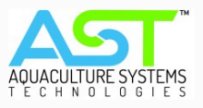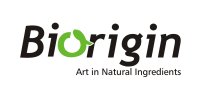Recent Advancements in Seahorse Aquaculture and Conservation
Seahorses (genus Hippocampus) are eye-catching fishes. Their unusual features, such as a horse-like head, a monkey-like prehensile tail and male “pregnancies” have intrigued people of all ages. This unique set of features and bright colorations has resulted in seahorses being consistently listed as one of the most popular exhibit animals in zoos and public aquaria. Advancements in captive breeding make seahorses an excellent case study for aquaculture and stewardship for promoting marine conservation.

FIGURE 1. Fully mature captive-bred hybrid (H. erectus ♂ × H. reidi ♀) seahorses grown at the VBML for research projects. Photo by Emily Walker
Early Aquaculture Studies
Inhabiting estuarine and coastal shallow waters, wild seahorses face many challenges, such as loss of habitat, pollution, eutrophication due to coastal development and over-exploitation for the traditional Chinese medicine (TCM) market. Seahorses are hard to survey in the wild because of their small size and cryptic nature. However, bycatch data indicate declines in wild populations of seahorses. Furthermore, the demand for dried seahorses for TCM is ever increasing, currently estimated to range from tens to hundreds of metric tons. As results of the TCM market demand, interest in pursuing commercialized seahorse aquaculture began in the early 1980s, but was not able to become a competitive alternative to animals captured from the wild until very recently.
Early forays into seahorse aquaculture focused on exploratory feeding studies, and were spearheaded in Asia and Australia. Early research found that species with relatively large and well-developed young with short pelagic phases fared much better than species with small young and long pelagic phases. In addition to evaluating appropriate feeds, much effort was dedicated to identifying rearing protocols that promoted proper growth and minimized disease outbreaks. Nonetheless, those endeavors were challenging to say the least (Koldewey and Martin-Smith 2010).
In light of the numerous threats to wild seahorses and a lack of substantial advancements in captive breeding, successful efforts were made to list all seahorses under Appendix II of the Convention of International Trade in Endangered Species of Wild Fauna and Flora (CITES). Under CITES guidelines, the international trade of seahorses must be monitored though a permitting system and a minimum size of 10 cm applies to any seahorse traded across international borders.
Seahorse Aquaculture and Conservation Today
Since the late 1990s, substantial progress has been made in successfully breeding various seahorse species and in achieving small scale commercial operations, mostly in the US, Europe and Australia, for the aquarium trade.
About 10 years ago, the Florida Institute of Technology launched a rigorous seahorse research program, mostly at the Vero Beach Marine Laboratory (VBML), where seawater from the Atlantic Ocean is pumped directly into aquatic life-support systems. Because water quality is one of the greatest challenges in raising marine organisms, having the option to set up a flow-through system is highly advantageous for aquaculture. We have conducted various aspects of aquaculture research, such as breeding, growth, survivorship, disease and color change (for aquarium trade) using the Western Atlantic species, the lined seahorse Hippocampus erectus.
Although many small-scale seahorse production facilities have been established to supply the aquarium trade market, the real solution for seahorse conservation lies in mass production to meet the demand of TCM in China. Large numbers of seahorses are consumed for medicinal purposes in China, as more studies find support for their pharmacological benefits (Chen et al. 2015).
In recent years, over a dozen large-scale commercial seahorse aquaculture facilities have emerged in China. Upon returning to China in recent years, two of the postdoctoral fellows and research associates in our lab, Dr. Qiang Lin and Dr. Dong Zhang, have spearheaded the efforts to revitalize seahorse aquaculture industry there by providing technology support. Largely due to their efforts, dozens of large commercial-scale production companies have sprung up in the last two to three years, producing up to a million seahorses a year and numbers are increasing at a fast rate.
With a better grasp of general aquaculture practices and commercial-scale viability, recent research is focused on finetuning culture methods by looking closer at the sensory systems and how these may affect culture. Seahorses are born as predators and are reliant on sight for prey capture. This means that light intensity can have substantial effects on survival and growth by mediating hunting and feeding strategies and by influencing early eye development (Delabbio 2015).
The revolution in light-emitting diode (LED) lighting technology now allows for a cost-effective way to adjust light intensity and light quality. Furthermore, LED lighting allows the use of a more variable array of light intensities and wavelengths than standard incandescent and fluorescent lights. Various conditions that replicate light intensities in marine ecosystems were established using energy-efficient LEDs to study the effects of light intensity on juvenile lined seahorses. Subjecting separate groups of newly-released seahorses to different light intensities, and measuring predation success gives us better insight about the light intensities that may benefit seahorses during this most crucial life stage (Fig. 2).
Read the rest of this article in the December 2015 issue of World Aquaculture Magazine here
















